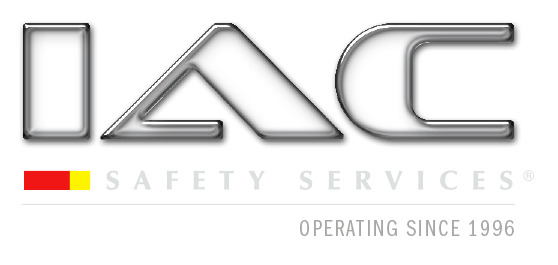

UET20619 - Certificate II in ESI
Asset Inspection


Student Vocational Outcomes
Students who successfully achieving the UET20619 Certificate II in ESI Asset Inspection qualification could consider seeking employment within the ESI, as they will be eligible to be employed as ‘Electrical Powerline Asset Inspector’. These students may also use these studies to advance their ESI carriers, being eligable to apply for recognition of the studies already achieved.
The NSW Electricity Supply Act 1995 obligates Electrical Supply Distribution Networks (ESDN’s) to promote the efficient and environmentally responsible production and use of electricity; and to deliver a safe and reliable supply of electricity, confers on ESDNs such powers as are necessary to enable them to construct, operate, repair and maintain their electricity works, and to promote and encourage the safety of persons and property in relation to the generation, transmission, distribution and use of electricity.
A critical component in meeting these obligations is achieved by scheduled regular Asset Inspections. Electrical Powerline Asset Inspectors inspect and report on the status of distribution system assets including poles and structures, cables, overhead conductors, public lighting, security fencing and gates, insulators and transformers. They may also carry out minor maintenance and weed control.
Coronial enquiry findings identified the need for NSW ESDNs to commence using the National Vocational Education System for all workers who perform Asset Inspection duties, rather than their individual existing internally approved training courses. This situation has resulted in all NSW Asset Inspectors having to undertake UET20619 Certificate II in ESI – Asset Inspection.
Upon successful completion, students will have the skills and knowledge to safely comply with relevant State or Territory regulations, distribution network service providers policies/procedures, state and local government legislation, electricity supply and construction industry Guidelines/Codes of Practices or other related requirements whilst inspecting and treating poles and/or inspecting live electrical apparatus.
Cohorts
Detailed is an explanation of our various student cohorts. The specific details on how they are managed appear in various matrices throughout our / your Training and Assessment Strategy.
Note: NSW is unique in the fact that it has a ‘contestable works program’. All other Australian states and territories ESDN’s use a preferred ‘Contractor’ system, where the ESDN awards work via tendering systems. This situation may change with the introduction of Australian Energy Regulator – Ring Fencing Laws, effective January 1st 2018.
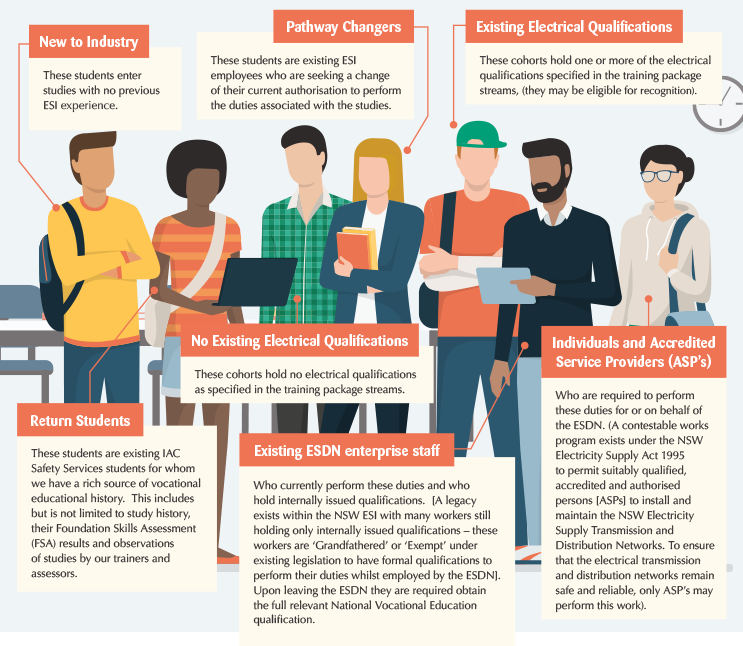
New to Industry
These students enter studies with no previous ESI experience.
Pathway Changers
These students are existing ESI employees who are seeking a change of their current authorisation to perform the duties associated with the studies..
Existing Electrical Qualifications
These cohorts hold one or more of the electrical qualifications specified in the training package streams, (they may be eligible for recognition).

Return Students
These students are existing IAC Safety Services students for whom we have a rich source of vocational educational history. This includes but is not limited to study history, their Foundation Skills Assessment (FSA) results and observations of studies by our trainers and accessors.
No Existing Electrical Qualifications
These cohorts hold no electrical qualifications as specified in the training package streams.
Existing ESDN enterprise staff
Who currently perform these duties and who hold internally issued qualifications. [A legacy exists within the NSW ESI with many workers still holding only internally issued qualifications - these workers are 'Grandfathered' or 'Exempt' under existing legislation to have formal qualifications to perform their duties whilst employed by the ESDN]. Upon leaving the ESDN they are required obtain the full relevant National Vocational Education qualification.
Individuals and Accredited Service Providers (ASP's)
Who are required to perform these duties for or on behalf of the ESDN. (A contestable works program exists under the NSW Electrical Supply Act 1995 to permit suitable qualified, accredited and authorised persons [ASP's] to install and maintain the NSW Electricity Supply Transmission and Distribution Networks. To ensure that the electrical transmission and distribution networks remain safe and reliable, only ASP's may perform this work).
Volume of Learning
9 month program
The total volume of learning specified for Certificate II level qualifications as determined from the AQF Framework is 0.5 -1 year or 600 - 1200 hours for a learner who does not hold any of the competencies identified in the qualification.
An obligation is placed on an RTO to justify why they intent to conduct Certificate level training and assessment at a rate lower than prescribed above.
UET12 – Transmission, Distribution and Rail Sector Training Package (Release 2.1) specifies weighting requirements for both Certificates and individual Units of Competency. The weighting points are generally / typically reflected in nominal hours of training and assessment.

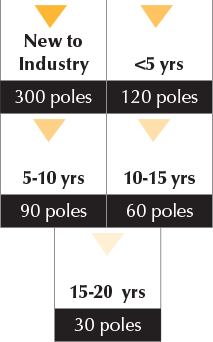
In any case all students will be given the opportunity to fully absorb the required knowledge, and to develop skills over time in the different contexts they will experience in an ESI workplace.
Volume of Learning Table
|
Australian Qualification Framework (AQF) |
UET20619 - Certificate II in ESI - Asset Inspection* |
IAC Safety Services TAS & Practices. | Totals | ||
|---|---|---|---|---|---|
|
25%
Face to Face and Bulk ups |
65%
On the job |
10%
Assessments |
100% | ||
| *Core plus electives | |||||
| 600 – 1,200 hrs | 360 points | 225 hrs (approx) | 585 hrs (approx) | 90 hrs (approx) | 900 hrs |
Training and Assessment Breakdown
Certificate Level
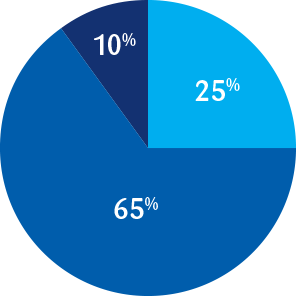
Learning: Face to Face, Bulk up
Learning: On the job.
Assessments: Class room, practicals in our yard, theory etc.
The pie graph represents a typical break down of time allocated to each stage of training and assessment. This may change due to the specific stakeholders needs.
Training and Assessment Breakdown
You wouldn’t expect these guys to be shown once or twice and then deemed competent, would you?
So it is a little unrealistic to expect ESI Workers studying to perform high risk activities to do the same. As the major tasks for Asset Inspection Workers these units must be undertaken / proven with more Face to Face time in our controlled ESI yard at progressively higher voltages.

Typical Day

07:30 – 09:30
Classroom based learning

09:30 – 09:45
Break

09:45 – 10:00
Prestart Brief

10:00 – 12:00
ESI Construction Work

12:00 – 12:30
Lunch

12:30 – 15:30
ESI Construction Work

07:30 – 09:30
Classroom based learning

09:30 – 09:45
Break

09:45 – 10:00
Prestart Brief

10:00 – 12:00
ESI Construction Work

12:00 – 12:30
Lunch

12:30 – 15:30
ESI Construction Work
Your Electives
Training packages provide a range of electives that can be studied. They do this to achieve the highest possible level of vocational outcome i.e. to ensure that studies undertaken maximise your employability and potential return for both your employer and industry.
This certificate is being offered within the state of NSW, which has a contestable electricity market operating under the Electricity Supply Act, 1995, refer to appendix B for details.
The electives proposed are those which will allow the student and their employer to be eligible to apply to the Dpt Trade and Investment to apply to become a Level I and II Accredited Service Provider.
Elective Competency Standard Units, Complete Elective units to achieve a total of weighting of 140 points from the following groups:
| Group | Min points | Max points | |
|---|---|---|---|
| A |
Imported and Common Elective Units
Imported units from other training packages and/or state accredited courses can be added to this group, but they must be selected from qualifications where the unit is first packaged at AQF level 2. If units have not being assigned a weighting by the relevant EE-Oz Industry Technical Advisory Committee, their weighting will be 10 points. |
0 | 60 |
| B |
Qualifications Electives
You may select all your elective units from this Group |
80 | 140 |
Course Structure
Core Units — All to be completed
| IAC Duration (approx hours) | |||||
|---|---|---|---|---|---|
|
25%
Face to Face and Bulk ups |
65%
On the job |
10%
Assessment |
|||
| UEENEEE101A | Apply Occupational Health and Safety regulations, codes and practices in the workplace | 15 | 39 | 6 | 60 |
| UETTDREL13 | Comply with sustainability, environmental and incidental response policies and procedures | 25 | 65 | 10 | 100 |
| UETTDREL14 | Working safely near live electrical apparatus as a non-electrical worker | 25 | 65 | 10 | 100 |
| UETTDREL17 | Operate asset inspection plant, machinery and equipment near live electrical apparatus | 25 | 65 | 10 | 100 |
| UETTDREL18 | Inspect and treat poles and inspection of electrical apparatus | 25 | 65 | 10 | 100 |
| UETTDREL19 | Identify and interpret characteristics of electrical apparatus associated with power industry assets | 25 | 65 | 10 | 100 |
| Total | 140 | 364 | 56 | 560 hrs | |
| Elective Competency Standard Units. Complete Elective units to achieve a total of weighting of 140 points from the following groups: | ||||||
|---|---|---|---|---|---|---|
|
Group A – Common Elective Units
You may complete units to a maximum weighting of 60 points |
Group | IAC Duration (approx hours) | ||||
|
25%
Face to Face and Bulk ups |
65%
On the job |
10%
Assessment |
||||
| UEENEEC001B | Maintain documentation | A | 15 | 39 | 6 | 60 |
| UEENEED101A | Use computer applications relevant to a workplace | A | 15 | 39 | 6 | 60 |
| 30 | 78 | 12 | 120 hrs | |||
|
Group B - Qualification Electives
Complete units to at least 80 points from this group. You may select all your elective units from this Group. |
Group | IAC Duration (approx hours) | ||||
|
25%
Face to Face and Bulk ups |
65%
On the job |
10%
Assessment |
||||
| UETTDREL21 | Operate specialised data information equipment near live electrical apparatus | B | 25 | 65 | 10 | 100 |
| UETTDRVC23 | Plan the removal of vegetation up to vegetation exclusion zone near live electrical apparatus | B | 15 | 39 | 6 | 60 |
| UETTDRVC27 | Monitor safety compliance of vegetation control work in an ESI environment | B | 15 | 39 | 6 | 60 |
| 55 | 143 | 22 | 220 hrs | |||
NOTE: Individual Study Plans are in your 365 Planner Units of Competency in red are core (compulsory) and those in green are electives.
Certificate II in ESI
To be effectively and efficiently processed through your studies, this Certificate is undertaken as follows:
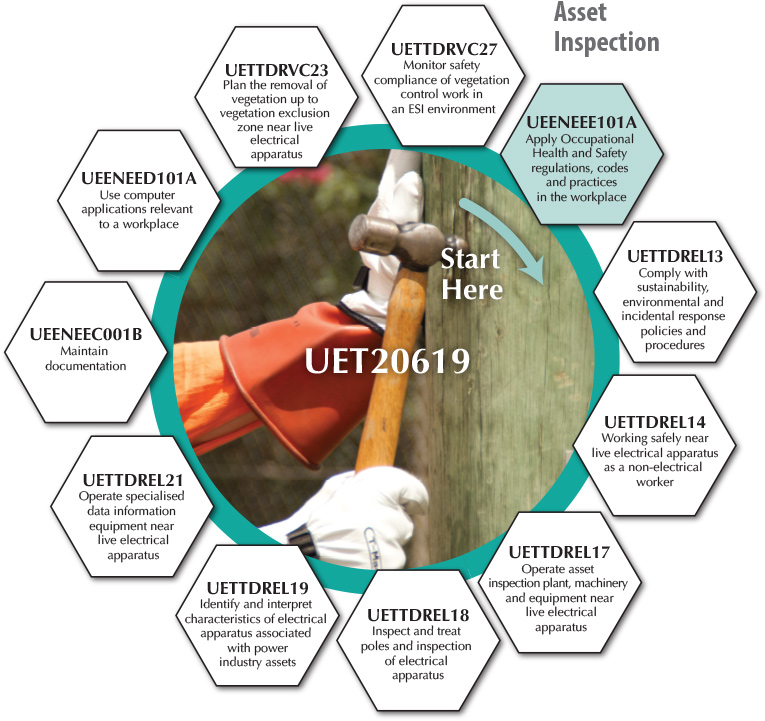
UET20619
Asset Inspection
UEENEEE101A
Apply Occupational Health and Safety regulations, codes and practices in the workplace
UETTDREL13
Comply with sustainability, environmental and incidental response policies and procedures
UETTDREL14
Working safely near live electrical apparatus as a non-electrical worker
UETTDREL17
Operate asset inspection plant, machinery and equipment near live electrical apparatus
UETTDREL18
Inspect and treat poles and inspection of electrical apparatus
UETTDREL19
Identify and interpret characteristics of electrical apparatus associated with power industry assets
UETTDREL21
Operate specialised data information equipment near live electrical apparatus
UEENEEC001B
Maintain documentation
UEENEED101A
Use computer applications relevant to a workplace
UETTDRVC23
Plan the removal of vegetation up to vegetation exclusion zone near live electrical apparatus
UETTDRVC27
Monitor safety compliance of vegetation control work in an ESI environment
*These Units of Competency are outsourced to an external RTO, IAC has an approved provider to refer students to. Full unit details are available in the Training Assessment Strategy (TAS) and from training.gov.au
Further Reading, T&Cs
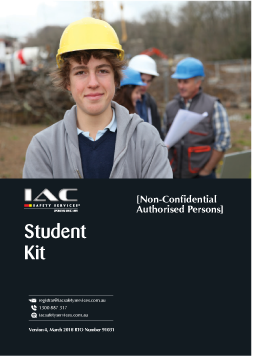
IAC Student Kit

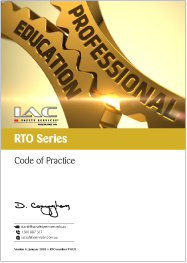
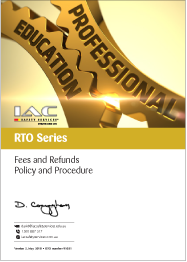
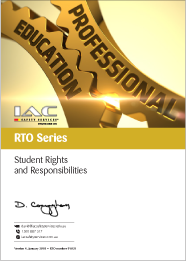
IAC RTO Series

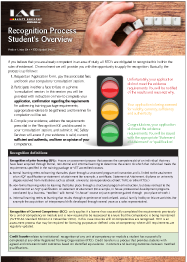
IAC Recognition Series
Our schedule

